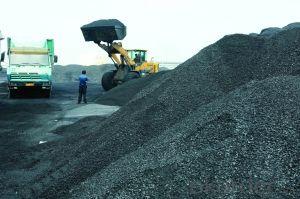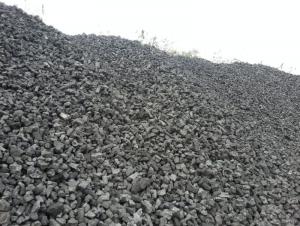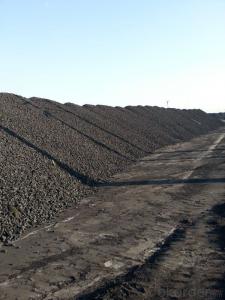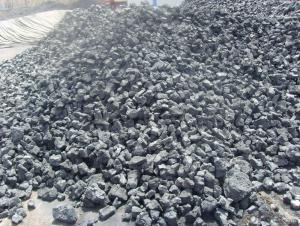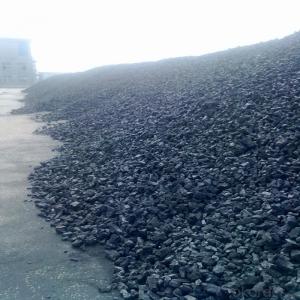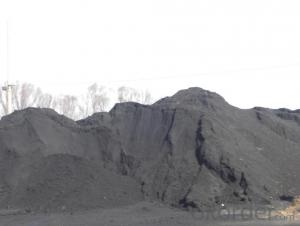Metallurgical Coke of Coke Strength after Reactivity 65
- Loading Port:
- Tianjin
- Payment Terms:
- TT OR LC
- Min Order Qty:
- 100 m.t.
- Supply Capability:
- 3000 m.t./month
OKorder Service Pledge
OKorder Financial Service
You Might Also Like
1. Structure of Metallurgical Coke of Coke Strength after Reactivity 65 Description:
Coke is mainly used for blast furnace ironmaking and used for copper, lead, zinc, titanium, antimony, mercury and other non-ferrous metal smelting of blast furnace, reducing agent, compound and the function of stock column frame.
Blast furnace with Coke instead of charcoal, which laid a foundation for the large-scale of modern blast furnace, is a major milestone in the history of metallurgy.
Our country's metallurgical industry has a long history, is the original fuel charcoal smelting industry, due to the charcoal burning temperature is lower, and short duration of fire and not easy to master hour, therefore, directly affect the level of smelting, to make the steel quality is not guaranteed. Later, people use coal as smelting, coal combustion temperature is higher, and the combustion duration is longer than charcoal, but easily broken after coal is heated in the oven, affect the burden of permeability, and high content of sulfur in coal, directly affect the quality of the cast iron. After a period of practice, it has been found that the coal after dry distillation (i.e., separated flame heating), volatile components may be removed, and the porosity increased, resembling charcoal, fire is better than that of coal, but also can avoid charcoal and coal. This after carbonization of coal is coke.
2. Main Features of the Metallurgical Coke of Coke Strength after Reactivity 65:
• Quality assurance
• Mutual benefit
• Preferential price
• Various choice
3. Metallurgical Coke of Coke Strength after Reactivity 65 Images:



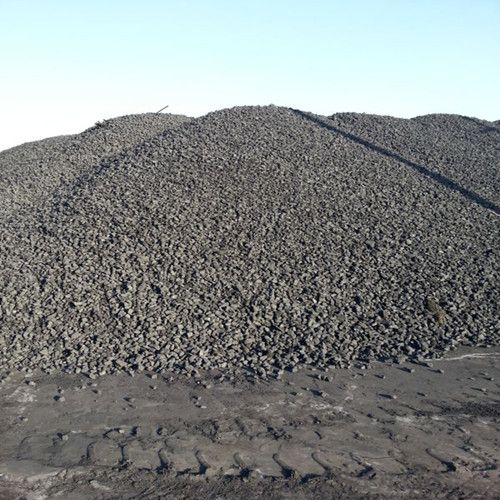
4. Metallurgical Coke of Coke Strength after Reactivity 65 Specification:
Parameters | Guarantee | Rejection |
Total Moisture (As received basis) | 5% max | |
Ash (dry basis) | 12.5% max | > 13.5% |
Volatile Matter (dry basis) | 1.5% max | > 1.8% |
Sulphur (dry basis) | 0.65% max | > 0.75% |
Phosphorus (dry basis) | 0.035% max | > 0.045% |
M10 | 7% max | > 9% |
M40 | 84% min | <82% |
CSR | 65% min | <63% |
CRI | 25% max | > 27% |
Size 30-90 mm | 90% min | |
+90 mm | 5% max | > 8% |
-30mm | 5% max | > 8% |
5. FAQ
We have organized several common questions for our clients,may help you sincerely:
1) How to guarantee the quality of the products?
We have established the international advanced quality management system,every link from raw material to final product we have strict quality test;We resolutely put an end to unqualified products flowing into the market. At the same time, we will provide necessary follow-up service assurance.
2) What are coke's main physical properties?
on the relative density of density, coke, coke porosity, thermal conductivity for the heat capacity of coke, coke, coke, coke ignition temperature, coke thermal expansion coefficient of thermal stress and coke, coke shrinkage rate, coke resistivity permeability, etc.
The average heat capacity is 0.808 kj/(KGK) (100 ℃), 1.465 kj/(KGK) (1000 ℃)
Thermal conductivity is 2.64 kj/(MHK) (room temperature), 6.91 kj/(MHK) (900 ℃);
Ignition temperature (air) is 450-650 ℃.
3)Main type
Metallurgical coke is blast furnace coke, coke, iron alloy and nonferrous metal smelting with coke. As more than 90% of the metallurgical coke for blast furnace ironmaking, so often called the blast furnace coke metallurgical coke.
Foundry coke is dedicated to cupola molten iron. Coke is the main fuel of cupola molten iron. Its role is hot metal melting furnace charge and overheating, support stock column maintain its good air permeability. As a result, coke blocks should have large, low reactivity, low porosity, with sufficient impact crushing strength, ash content and low sulfur content.
In China, "natural coke" used as a fuel. Underground coal seam spontaneous combustion, and can also form natural coke. Natural coke, the grey to dark grey color, more porous, can sometimes show hexagonal prism shape. Compared with artificial coke, weight big, small porosity, density.
- Q: How coal is turned into coke in the coking chamber
- In the furnace in the absence of air through the kiln wall edge ignition hole artificial ignition, coking coal will be stacked in the kiln fire, coking coal self combustion heat by layer coal heating (direct fire heating); a large amount of coal gas from coal combustion and unburned cracking formation hot air flow,
- Q: Who knows the proportion of pig iron and coke used in Cupola
- There is doubt: the export rate is lower than the standard exception.4, blank blank processing: according to customer requirements of different direct sales, some need to continue processing after the sale, the ordinary rough machined after a blank rate of about more than 70%, about 30% (excluding scrap scrap), dryer enterprises after after machining yield is about 25% ~ 30% (including waste scrap and iron, basically use recycled material, material waste accounted for ratio of 30% ~ 40%). To 1.5M x 2M cylinder, for example, rough weight of about 5.8 tons ~ ~ 6 tons (standard cylinder, including the cylinder head) cylinder head rough weight of about 1.7 tons ~ ~ 1.8 tons, cylinder weight of about about 4.2 tons. After processing, the cylinder head weighs about 0.5 tons to 0.6 tons, accounting for the proportion of about 65% to 70% head (excluding scrap, scrap accounted for about 10%, blank cylinder head and iron) accounted for about 30% ~ 35% blank cylinder head, accounted for the proportion is about 40% recycled waste, scrap iron accounted for under foot material proportion 60%, enterprises can not return direct sales (currently, only production enterprises can use recycled scrap iron). Total iron blank ratio is about 15% ~ 18%.
- Q: Some experimental results summarized the following two facts: the coke can not be used to restore aluminum mine, but it can be used for the reduction of copper and iron; no containing copper sulfate solution with tin, thus the activity sequence C, Al, Cu, Fe of the four elements is ______.
- There is no containing copper sulfate solution with tin. Because the copper iron can be displaced from the salt solution in their description, copper and iron;To sum up, we can know that C, Al, Cu, Fe four elements of the order of activity is Al > C > Fe > Cu;The answer is: Al > C > Fe > Cu.
- Q: What is the phosphorus content in coke
- After drying, pyrolysis, melting, bonding, curing, shrinkage and other stages of the final coke, this process is called high temperature coking (high temperature carbonization)
- Q: I now do a good job in the coke network editor, I would like to know more about coke
- (2) reducing agent.The reduction of ore in blast furnace is accomplished by indirect reduction and direct reduction. The indirect reduction is about 400 degrees centigrade. The indirect reduction is rising gas CO reduction in ore, iron oxide from high iron gradually reduced low iron until the metal iron, while producing CO2:
- Q: How to remove the bottom of coke steel
- Finally, wash the rice cooker, stove, as well as your tired hands, thoroughly washed several times. Here, everything is back to normal, as if nothing had happened.After such a toss, the coke pot was removed, but the bottom layer of the so-called "nonstick layer" are often the early damage (normally always destroyed), it is impossible to. It's like trying to get rid of terrorists.If the bottom of the layer of carbon black is not easy to erase, even if, even with good. Some people may worry about eating into the carbon poisoning, I think there is no need to worry about this. Wenchuan earthquake hero, Mr. Zhu Jianqiang, light to eat charcoal for 36 days, you can see the toxicity of carbon nothing. Moreover, after cleaning the rice cooker in the layer of carbon black has very little
- Q: The cost of iron ore and coke
- Per ton of iron ore 490 yuan / ton, the use of steel per ton coke of 500 kg, coke per ton of 1250 yuan / ton. You can calculate the proportion of these data
- Q: What is the difference between coke and semi coke in ferrosilicon smelting process? In the process of energy statistics in the end should be 0.9714 of the conversion coefficient should be used with the conversion coefficient of 0.75 x 0.9714, please expert advice? emergencyUrgent!
- The difference between them is that the final temperature of the two, the use of different raw materials, product yield and product properties are not the same. Low temperature coke. Under the condition that the coal is isolated from the air, the product is heated to 500 to 600 DEG C to obtain the product. It uses the raw coal is lignite, metamorphic degree of coal, long flame coal and gas coal. The final purpose of the low temperature carbonization is to obtain high yield coal tar
- Q: Coke in the whole process of steelmaking in the end is what to do, just to provide heat or carbon and other substances into steel or iron?In the study of coal classification inside, one is divided into coking coal, coking coal and coke as main, and then you see is steel or iron coke must material. What is not clear. In the end, out of coal mining is mainly used to burn energy extraction, or said that coal like oil can be converted into other products, which is a coke can convert?
- It is necessary to add coke, pellet, sinter ore, ore and other materials into the blast furnace in a certain proportion, batch and sequence, and then to produce molten iron in the reducing atmosphere of the blast furnaceAfter the hot metal to steel in converter against the general converter, scrap also need to add a certain amount of used to balance the heat. Hot metal and scrap are added to the converter after the oxygen lance for oxygen operation, the oxidation of oxygen to carbon in liquid iron, silicon, manganese, phosphorus, sulfur and some non-metallic inclusions to form steel. Adding lime, dolomite, iron oxide and mine slag and coolant is needed in oxygen at the same time. After the completion of steel smelting in the tapping process according to different requirements with the corresponding iron alloy steel, after also refining process.
- Q: The coke is divided into several separate uses
- Gasification coke is used for the production of coke gas. The utility model is mainly used in a fixed bed coal gas producer with solid slag discharging, and is used as a gasification raw material to produce CO and H2 as combustible components. The main reaction of gasification process:C+O2 - CO2+408177KJ
Send your message to us
Metallurgical Coke of Coke Strength after Reactivity 65
- Loading Port:
- Tianjin
- Payment Terms:
- TT OR LC
- Min Order Qty:
- 100 m.t.
- Supply Capability:
- 3000 m.t./month
OKorder Service Pledge
OKorder Financial Service
Similar products
Hot products
Hot Searches
















